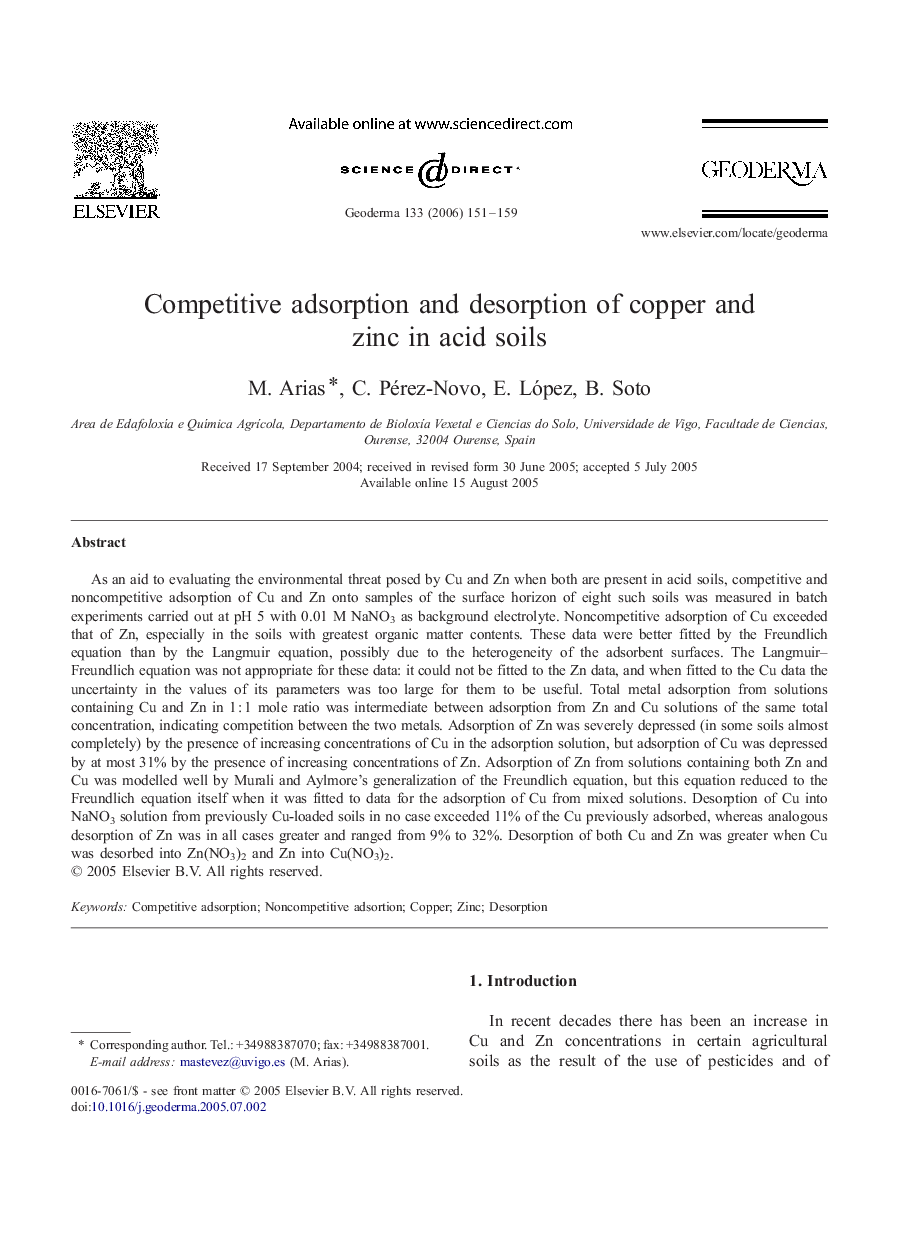| کد مقاله | کد نشریه | سال انتشار | مقاله انگلیسی | نسخه تمام متن |
|---|---|---|---|---|
| 4575825 | 1629565 | 2006 | 9 صفحه PDF | دانلود رایگان |

As an aid to evaluating the environmental threat posed by Cu and Zn when both are present in acid soils, competitive and noncompetitive adsorption of Cu and Zn onto samples of the surface horizon of eight such soils was measured in batch experiments carried out at pH 5 with 0.01 M NaNO3 as background electrolyte. Noncompetitive adsorption of Cu exceeded that of Zn, especially in the soils with greatest organic matter contents. These data were better fitted by the Freundlich equation than by the Langmuir equation, possibly due to the heterogeneity of the adsorbent surfaces. The Langmuir–Freundlich equation was not appropriate for these data: it could not be fitted to the Zn data, and when fitted to the Cu data the uncertainty in the values of its parameters was too large for them to be useful. Total metal adsorption from solutions containing Cu and Zn in 1 : 1 mole ratio was intermediate between adsorption from Zn and Cu solutions of the same total concentration, indicating competition between the two metals. Adsorption of Zn was severely depressed (in some soils almost completely) by the presence of increasing concentrations of Cu in the adsorption solution, but adsorption of Cu was depressed by at most 31% by the presence of increasing concentrations of Zn. Adsorption of Zn from solutions containing both Zn and Cu was modelled well by Murali and Aylmore's generalization of the Freundlich equation, but this equation reduced to the Freundlich equation itself when it was fitted to data for the adsorption of Cu from mixed solutions. Desorption of Cu into NaNO3 solution from previously Cu-loaded soils in no case exceeded 11% of the Cu previously adsorbed, whereas analogous desorption of Zn was in all cases greater and ranged from 9% to 32%. Desorption of both Cu and Zn was greater when Cu was desorbed into Zn(NO3)2 and Zn into Cu(NO3)2.
Journal: Geoderma - Volume 133, Issues 3–4, August 2006, Pages 151–159